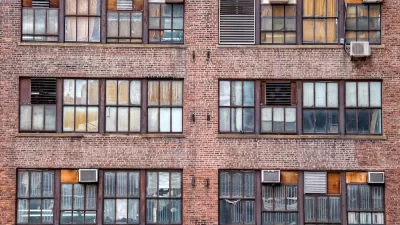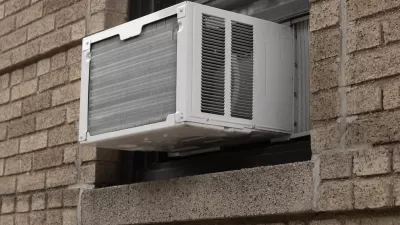Following on the hottest ever first half of a year in America's recorded history, James Barron examines the history behind the creation of air conditioning, on this day in 1902.
The birth of air conditioning can be traced to July 17, 1902, when a junior engineer named Willis Carrier drew the "blueprints for newfangled equipment to temper the air...a solution so simple that it had eluded everyone from Leonardo da Vinci
to the naval engineers ordered to cool the White House when President
James A. Garfield was dying: controlling humidity."
Barron describes the dilemma that Carrier, "a junior engineer from a furnace company," was trying to solve when he devised a system involving "fans, ducts, heaters and perforated pipes" for the the second floor of a Brooklyn printing plant.
Needless to say, "It was a world-changing innovation," notes Barron.
"'Air-conditioning, in the broad
sense, had a profound effect on the way people lived and worked,' said
Bernard A. Nagengast, an engineering consultant who specializes in the
history of air-conditioning and heating. 'It allowed industry to operate
in ways it couldn't operate before, in places it couldn't operate
before.'"
"It all but redefined Florida and Houston and the rest of
the Sun Belt. 'And Singapore, sometimes called the air-conditioned
nation,' said Eric B. Schultz, a former Carrier Corporation executive
and author of a recently published company history."
"And, Mr.
Schultz said, the Internet, because air-conditioning minimized dust,
making possible the so-called clean rooms for computer manufacturers and
electronics companies."
FULL STORY: Before Anyone Complained About the Air-Conditioning, an Idea

Alabama: Trump Terminates Settlements for Black Communities Harmed By Raw Sewage
Trump deemed the landmark civil rights agreement “illegal DEI and environmental justice policy.”

Study: Maui’s Plan to Convert Vacation Rentals to Long-Term Housing Could Cause Nearly $1 Billion Economic Loss
The plan would reduce visitor accommodation by 25% resulting in 1,900 jobs lost.

Why Should We Subsidize Public Transportation?
Many public transit agencies face financial stress due to rising costs, declining fare revenue, and declining subsidies. Transit advocates must provide a strong business case for increasing public transit funding.

Paris Bike Boom Leads to Steep Drop in Air Pollution
The French city’s air quality has improved dramatically in the past 20 years, coinciding with a growth in cycling.

Why Housing Costs More to Build in California Than in Texas
Hard costs like labor and materials combined with ‘soft’ costs such as permitting make building in the San Francisco Bay Area almost three times as costly as in Texas cities.

San Diego County Sees a Rise in Urban Coyotes
San Diego County experiences a rise in urban coyotes, as sightings become prevalent throughout its urban neighbourhoods and surrounding areas.
Urban Design for Planners 1: Software Tools
This six-course series explores essential urban design concepts using open source software and equips planners with the tools they need to participate fully in the urban design process.
Planning for Universal Design
Learn the tools for implementing Universal Design in planning regulations.
Smith Gee Studio
Alamo Area Metropolitan Planning Organization
City of Santa Clarita
Institute for Housing and Urban Development Studies (IHS)
City of Grandview
Harvard GSD Executive Education
Toledo-Lucas County Plan Commissions
Salt Lake City
NYU Wagner Graduate School of Public Service





























